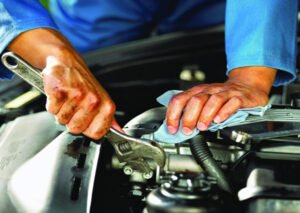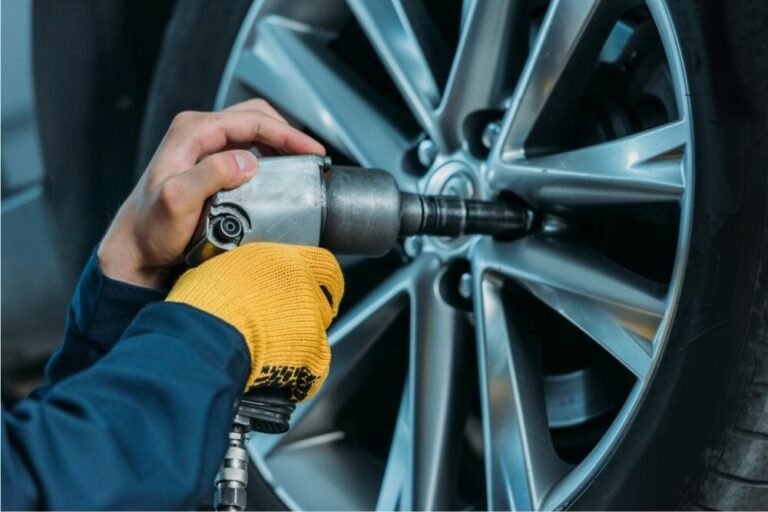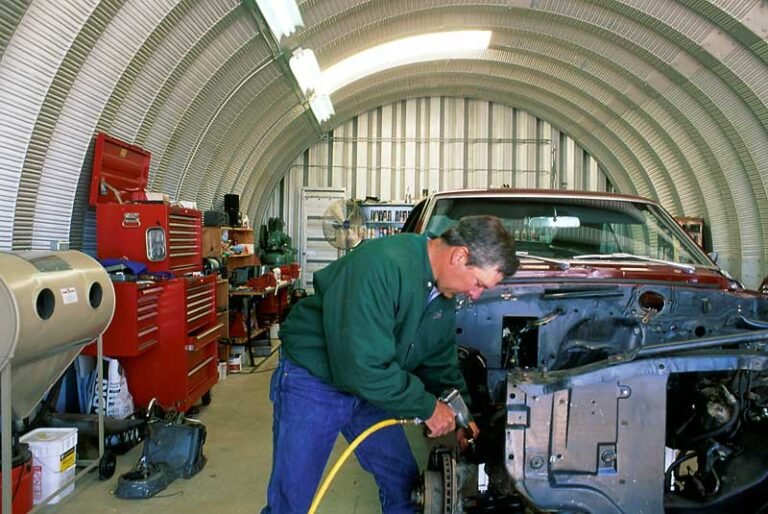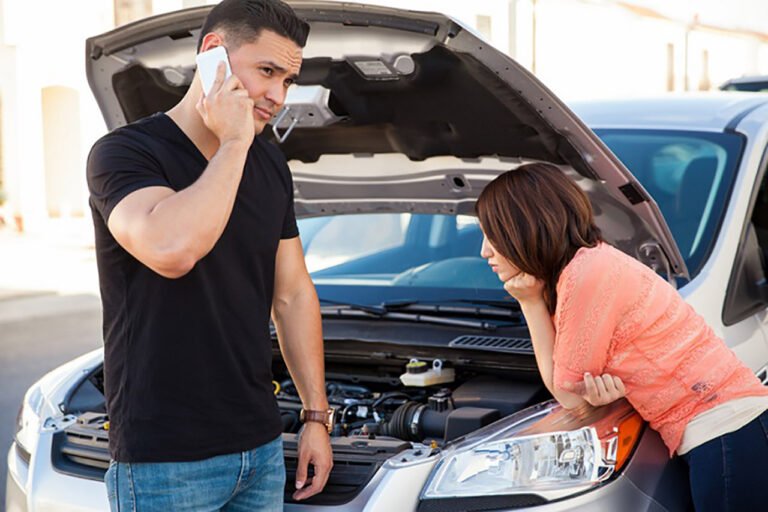What To Do When Your Car Breaks Down: A Comprehensive Guide
Imagine this scenario: you’re cruising down the road, enjoying your drive, when suddenly your car sputters and comes to a grinding halt. Your heart races as panic sets in. What do you do now? Don’t worry – we’ve got you covered! In this comprehensive guide, we’ll walk you through the steps to take when your car breaks down, ensuring that you stay safe and get back on the road as quickly as possible. From essential safety precautions to understanding the causes of the broke down, we’ll provide all the information you need to navigate this stressful situation with confidence. So, buckle up, and let’s dive into what to do when your car broken down!

Stay Safe When Your Car Breaks Down
Your safety is paramount when your car broken down. To stay safe, first, get off the road safely and find a secure spot. Take essential safety precautions like turning on hazard lights and placing warning triangles behind your vehicle. Stay calm, and patient, and follow instructions from professionals to ensure a safe outcome.
Getting Off The Road Safely
When your car breaks down, it’s crucial to get off the road safely to avoid accidents and further damage. If possible, steer your vehicle towards the shoulder or a safe spot away from traffic. Turn on your hazard lights to alert other drivers and use hand signals if needed. Remember to stay calm and focused while maneuvering your car out of harm’s way.
Essential Safety Precautions
When your car breaks down, it’s crucial to prioritize safety. Here are some essential precautions to keep in mind:
1. Pull over to a safe location away from traffic.
2. Activate hazard lights and set up warning triangles or flares.
3. If possible, exit the vehicle on the side facing away from traffic.
4. Stay alert and aware of your surroundings.
5. Keep emergency supplies like water, food, and a first aid kit handy. Remember, safety should always come first when dealing with a car broken down situation!
Assess The Severity Of The Car breaks down
Assessing the severity of a car breakdown is crucial to determine the next steps. It’s important to understand whether it’s a total breakdown, where the vehicle cannot move at all, or a partial breakdown where some functions are impaired but can still be driven. Knowing this will help you make informed decisions on how to proceed and whether professional assistance is necessary. Always prioritize safety and take immediate action based on the severity of the situation.
Total Breakdown Vs. Partial Breakdown
Assess the Severity of the Breakdown
When your car broken down, it’s important to determine whether it is a total breakdown or a partial one. A total breakdown means that your car is completely inoperable and cannot be driven at all. On the other hand, a partial breakdown may still allow you to move the vehicle but with limited functionality or safety concerns. Understanding the severity of the breakdown will help you make informed decisions about what steps to take next and how to handle the situation effectively.
Understand The Causes Of Car Breakdowns
To effectively handle a car breakdown, it’s crucial to understand what causes them. The top 10 causes include battery issues, alternator failure, fuel system problems, engine overheating, electrical malfunctions, tire blowouts, transmission failures, ignition system failures, brake problems, and faulty starter motors. Knowing these common culprits can help you take preventive measures and address potential issues before they lead to a breakdown on the road. Stay informed and stay prepared!
Top 10 Causes Of Car Breakdowns
Car breakdowns can happen unexpectedly, leaving you stranded and frustrated. Understanding the common causes of car breakdowns can help you prevent future issues. The top 10 causes include battery failure, flat tires, engine overheating, electrical system problems, fuel issues, faulty alternator or starter motor, transmission failure, ignition system problems, cooling system failures, and brake failures. Being aware of these potential culprits can help you stay prepared on the road.
Contributing Factors To Car Breakdowns
The age of the Vehicle, the Importance of Regular Maintenance, and the Impact of Region and Season are all contributing factors to the car broke down. Older vehicles are more prone to mechanical issues while neglecting regular maintenance can lead to system failures. Additionally, extreme weather conditions or driving in harsh environments can put extra strain on your vehicle. Understanding these factors can help you take preventive measures to reduce the risk of a breakdown.
Age Of The Vehicle
The age of your vehicle can play a significant role in the likelihood of experiencing a breakdown. Older vehicles tend to have more wear and tear, making them more prone to mechanical issues. Regular maintenance becomes even more crucial as your car ages, as it helps identify potential problems before they escalate into major breakdowns. Keeping up with recommended service intervals can help extend the lifespan of your vehicle and reduce the risk of unexpected breakdowns on the road.

Importance Of Regular Maintenance
Regular maintenance is crucial for preventing car breakdowns. By keeping up with routine maintenance tasks like oil changes, tire rotations, and fluid checks, you can catch potential issues before they turn into major problems. Regular maintenance also helps to extend the lifespan of your vehicle and ensure optimal performance. Don’t neglect this important aspect of car ownership!
Impact Of Region And Season
The impact of region and season on servicing car near me cannot be underestimated. Different climates and terrains can put additional strain on your vehicle, increasing the likelihood of a breakdown. Extreme heat or cold can affect battery performance, while icy roads can lead to accidents. It’s important to understand how your location and the time of year may contribute to potential breakdowns so you can take appropriate precautions. Stay prepared and stay safe!
Coverage Options For Car Breakdowns
When your car breaks down, having the right coverage can make all the difference. There are several options available to help protect you from unexpected expenses and inconvenience. These include factory warranties, extended warranties/service contracts, insurance coverage, and roadside assistance programs. Understanding these options will give you peace of mind on the road.
Factory Warranty
When your car breaks down, one of the first things to consider is whether it’s covered by a factory warranty. This warranty, provided by the manufacturer, typically covers repairs and replacements for a specific period or mileage limit. It can save you from incurring hefty expenses if your breakdown falls within its coverage terms. Check your owner’s manual or contact the dealership to understand what repairs are included and any limitations that may apply.
Extended Warranty/Service Contract
An extended warranty or service contract is a valuable option to consider when your car broke down. It provides coverage beyond the manufacturer’s warranty, protecting you from unexpected repair costs. With an extended warranty, you can have peace of mind knowing that your vehicle will be taken care of and repaired promptly. This additional protection can save you money in the long run and ensure that your car remains in good condition for years to come.
Insurance Coverage
Having the right insurance coverage can provide peace of mind when your car broke down. A comprehensive auto insurance policy may offer coverage for car mechanical breakdowns, towing services, and roadside assistance. It’s important to review your policy to understand what is covered and any limitations or exclusions. Consider adding additional coverage or a separate roadside assistance program for added protection on the road.
Roadside Assistance Programs
When your car broke down, having a reliable roadside assistance program can be a lifesaver. These programs offer services like towing, flat tire repair, jump-starting a dead battery, and fuel delivery. They provide peace of mind knowing that help is just a phone call away. Make sure to research different programs and choose one that suits your needs and budget. Stay prepared for any unexpected breakdowns on the road!
Steps To Take When Your Car Breaks Down
1. Call for help immediately.
2. Stay with your vehicle to remain safe.
3. Communicate your location to the dispatcher or tow truck driver.
4. Stay calm and patient while waiting for assistance.
5. Follow the instructions of professionals when they arrive on the scene.
Remember, taking these steps can help ensure your safety and a smoother resolution when faced with a car broken-down situation.
Call For Help
When your car breaks down, it’s important to call for help immediately. Contact a trusted roadside assistance service or car towing company to get professional help on the way just search “my car broke down”. Provide them with accurate information about your location and the nature of the breakdown. Stay calm and patient while you wait for assistance to arrive, ensuring that you and your vehicle are safe in the meantime.
Stay With Your Vehicle
When your car broke down, it’s crucial to stay with your vehicle. Leaving it unattended can put you at risk and may even lead to theft or damage. By staying with your car, you ensure that help can find you easily and that no further harm comes to you or your vehicle. Remember, safety should always be a top priority in these situations.
Communicate Your Location
When your car breaks down, it’s crucial to communicate your location accurately. This will help the professionals find you quickly and provide assistance. Make note of any landmarks or street signs nearby, and if possible, use a GPS app on your phone to share your exact coordinates. Clear communication about where you are can make all the difference in getting the help you need efficiently. Stay calm and provide clear instructions when communicating your location.
Stay Calm And Patient
When your car breaks down, it’s important to stay calm and patient. Panicking won’t help the situation and can even make things worse. Take a deep breath, assess the situation, and remember that help is on the way. Remaining patient will allow you to think clearly and make rational decisions while waiting for assistance. Keep a positive mindset and know that this inconvenience will eventually be resolved. Stay calm and trust that everything will work out in the end.
Follow The Instructions Of Professionals
When your car breaks down, it’s important to follow the instructions of professionals. Whether it’s a car mechanic, tow truck driver, or roadside assistance provider, they have the expertise to guide you through the situation. Listen carefully and ask questions if needed. Their guidance can help ensure your safety and get your vehicle back on the road as quickly as possible. Trust their expertise and let them take charge!
Additional Tips And Resources For Dealing With Car Breakdowns
Preparing for car breakdowns ahead of time can save you stress and hassle. Always keep a roadside emergency kit in your vehicle with essentials like jumper cables, a flashlight, and a first aid kit. It’s also helpful to have the contact information for a reliable towing service or roadside assistance program on hand. Stay prepared so that if your car broken down, you’ll be ready to handle the situation calmly and efficiently.
Preparing For Car Breakdowns Ahead Of Time
When it comes to car breakdowns, being prepared is key. Take proactive steps to ensure you’re ready for any unexpected situation. Keep a spare tire and necessary tools in your trunk. Regularly check and maintain fluid levels and tire pressure. Always have an emergency kit with essentials like jumper cables, a flashlight, and first aid supplies. Plan your routes ahead of time using GPS or navigation apps to avoid unfamiliar areas or high-risk locations. By taking these precautions, you’ll be better equipped to handle a car breakdown when it happens!

What Not To Do When Your Car Breaks Down
When your car breaks down, it’s important to know what actions to avoid. Here are some things you should never do when faced with a breakdown: panic and make rash decisions, attempt repairs if you’re not qualified, leave your car in an unsafe location, accept help from unverified sources, or neglect to communicate your situation to others. Stay calm and follow the proper steps to ensure your safety and the efficient resolution of the situation.
Helpful Tools And Apps For Car Breakdowns
Several useful tools and apps can come in handy just to search “my car is broken down”. One essential tool is a portable jump starter, which can help you start your dead battery without needing another vehicle. Additionally, having a tire repair kit and an emergency roadside assistance app on your phone can provide invaluable support during unexpected breakdowns. These tools and apps can give you peace of mind knowing that help is just a tap away!
Locating Repair Shops
When your car broke down meaning, finding a reliable and trustworthy repair shop is crucial. Here are some tips to help you locate the right one:
1. Ask for recommendations: Reach out to friends, family, or colleagues who have had positive experiences with auto repair shops in your area. Their firsthand recommendations can provide valuable insights.
2. Check online reviews: Take advantage of online review platforms like Google or Yelp to read feedback from previous customers. Look for shops that consistently receive high ratings and positive comments about their service quality and professionalism.
3. Research certifications and accreditations: Look for repair shops that hold certifications from reputable organizations such as the National Institute for Automotive Service Excellence (ASE). Moreover, these certifications indicate that the technicians meet industry standards and possess the necessary skills to handle various car repairs.
4. Inquire about warranties: A reputable repair shop should offer warranties on their workmanship and parts used during repairs. This ensures peace of mind knowing that if something goes wrong after the fix, you’re covered.
5. Get estimates: Contact different repair shops in your area to get estimates for the required repairs or maintenance services. Compare prices but also consider factors like reputation, expertise, and customer service when making your decision.








